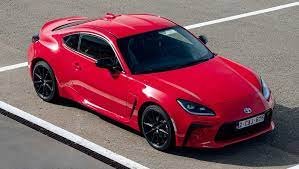Autofun Philippines – The Toyota 86 was the darling of the automotive press when it debuted in 2012 with a staggering starting price of $29,990, before winning the title of the Year.
Now it’s more mature, more powerful, more different than the Subaru BRZ (or so Toyota says) and more money.
We’ve driven the new Toyota 86 2023 on the track in automatic and manual modes, as well as briefly on the road, but this is the first time this innovative sports car has experienced the fine details. than of Australia’s road network, reaching speeds of 1013 km in a week tested on all types of surfaces.
That would make a nice contrast to the Subaru BRZ that ran for a few months in 2022.
Let’s start at the top, pickup trucks. I’ve seen GR86s and Subaru BRZs on the road, but I haven’t stopped to learn all the new car’s changes. It’s clearly a similar greenhouse, but the second-generation car is tighter and makes more sense.
The way the door sills lift and fold under the body accentuates the look of the GR86. The rear arches have bulged out to accommodate a 10mm wider rear track, more intense-looking LED headlights and a gaping black grille ready to take in the most air the 2’s 174 kW 4-litre boxer engine has. can take.
Apollo Blue isn’t a color I would choose if I hadn’t seen it in the flesh, but this little smurf looks very appealing on the road. How much does it cost and what do you get?
The interior of the Toyota GR86 2023 greets you with a much-updated tech package, which includes a beautiful digital driver display with “racing” mode and an 8.0-inch infotainment touchscreen. with Apple CarPlay and Android Auto wired, as well as DAB+ digital radio, but without native navigation.
Subaru is shameless about the software used on these screens. In fact, there are a lot of Subaru parts here that look even more obvious than the first generation car. The gauges, the climate control, the gearshift feel, and the stout, vaguely light clutch (more on that later) are all very Subaru. This tested variant is the top-spec GTS, distinguished by 18-inch anthracite alloy wheels, adaptive LED headlights, two-tone “Ultrasuede” upholstery, red stitching, and vanity mirrors. , priced at $45,390 before travel expenses.
How do competitors compare in value?
While the base GT saves you a bit of cash ($2150), has nice fabric upholstery and a similar tech package, it rolls on darker 17-inch alloy wheels wrapped in Michelin Primacy rubber, not the GTS safety Pilot Sport 4 rubber.
Toyota has missed the price mark a bit, we think. That a manual transmission costs the same as a car, but doesn’t get what some consider minimal safety tech by 2022 – such as automatic frontal emergency braking – annoys Subaru’s price cuts. $3800 for the automatic transmission.
Other performance vehicles that offer more features and practicality at similar prices, include the Hyundai i30 N ($50,200) and the pricier Ford Focus ST ($48,490) – both without tolls. – but none of these are custom two-seaters. And to be fair, the GR86 boasts newer technology than the similarly priced Mazda MX-5 GT SP ($47,320) and similar specs to the $74,990 Nissan Z. Again, both pre-cost on the road.
How is it to drive?
It’s refreshing to step into a modern car with good steering. I think I’ll accept a compromised bike ride, as the new GR86 is a sharper machine from the start. It feels sturdy and solid with the center of gravity right at your tailbone.
It’s refreshing to step into a modern car with good steering. The GR86’s power assist rack and pinion retain its feel intact and the 2.5-turn fast lock-to-lock ratio.
This fine joy of leading is visible everywhere, not just on a country road. But I can’t continue with the GR86’s low-speed clutch; it is light, resilient and has a high bite point — a classic Subaru trait that cannot be compared with other paired checkweighers.
I actually blocked the GR86 while talking to Chief Content Officer Jez Spinks… at which point he threatened to fire me.
The gearshift requires a moderate amount of force to get through the gate, and combined with the stiffer rear end, the manual GR86 can feel a bit clunky around town.
But all of that ends rather abruptly when you put your foot on the GR86’s responsive gas pedal and wake up the 2387cc ‘FA24’ four-cylinder boxer. The new car may have Michelin Pilot Sport 4 215/40 R18 tires that are much more grippy, not the Primacys of the Prius, but with that new mid-range tyre, you can glide the GR86 through deserted suburban roundabouts like wish.
It’s about 150 kilometers of city driving after that, though, and I’m not entirely convinced by the sturdier GR86, although it does make me smile. It’s time to hit the bends, first up the Old Pacific Highway north of Sydney to the Great North Road towards Laguna – roads that are a mixture of hard, variable camber and steep.
That means enjoying the reworked ‘FA24’ engine. It’s not entirely new, but the cylinders have been drilled out 94mm while keeping the same 86mm stroke of the old “square” engine. In the bare figures, the GR86 has increased by 22kW of power and 38Nm of torque, bringing power to 174kW/250Nm, but there are many more numbers to come. Torque now hits 3700 rpm, instead of the ridiculous 6400-6800 rpm as before. The result is a burly and supple GR86 that isn’t flat at all.
The GR86 hasn’t lost its interest in revs either, but the redline seems to work earlier than the 7,500 rpm that the tachometer suggests. Toyota claims a 0-100 km/h time of 6.3 seconds and a curb weight of 1291 kg for the manual GTS.
The short throttle clack that accompanies the curious synthesizer sounds somewhere between the Mazda RX-8 and the Honda Integra Type R. It’s odd, but the more I listen to it, the more I like it. It’s definitely better than the old 86’s grumpy bark. With added power and torque, the GR86 is finally easy on the country road. More than enough grumbling to drop it in third, but bubbly enough to indulge in second. And that ease encourages a lot of driver engagement.
The GR86’s chassis setup is sharper than the BRZ’s and requires deliberate but sensitive input for the best extraction. Turn on the throttle really hard and turn the throttle the same way you do with the MX-5, and you will probably feel the lack of steering. The same thing happens when you’re a bit greedy in between the large pedal rotation and the slightly wide spur.
I kept coming back for more, going out and back to the GR86 to enjoy the bike’s balance and precision. With a little more camber or stickier tires, it should be fine on the track.
However, let’s get back to the mundane things of city life, and the GR86 can make you nervous. Including on the highway on my way home from my next run to the Central Coast, where the boxer engine hummed annoyingly at constant high speeds. The GR86 also causes drivers to jostle over broken concrete, but that’s what you’d expect from a sports car.
The GR86’s journey is also steadier everywhere than the BRZ, and it can get tedious. I’m not sure the GR86 might be my only car. What I’m sure of, however, is that GR86 chief engineer Yasunori Suezawa and his team took a Porsche-like attitude to fine-tune this $50,000 sports car. It’s a little more powerful, a little sharper, more involved, and the more the better.










